Why is it important to visit a doctor for regular check-ups after mole removal
Removal of various skin neoplasms has long been a common procedure in dermatology clinics. But despite the popularity of the method of removing moles and other skin formations, patients may have various questions regarding the procedure and the rehabilitation period.
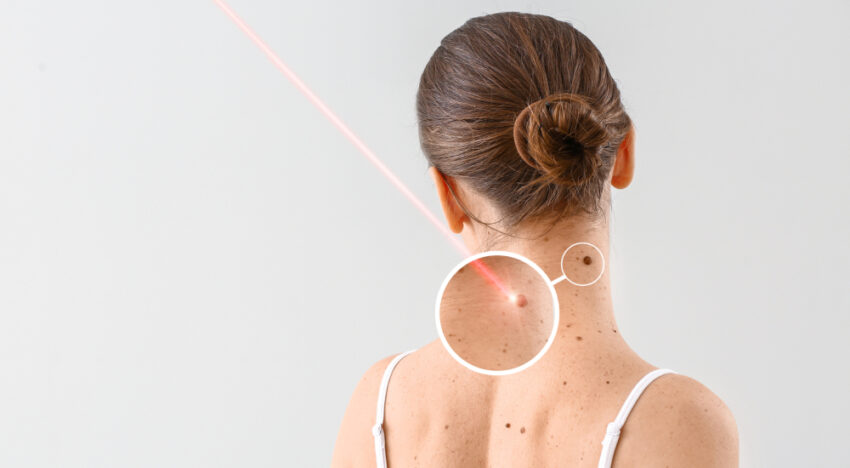
In this article, we will answer questions related to the post-procedural period: what are the consequences of mole removal, how is recovery after removal, and why it is important not to miss dermatological consultations after mole removal.
Consequences of mole removal on the face and body
Thanks to the local injection anesthesia used to remove the neoplasms, the consequences of mole removal will not be felt for 1-2 hours after the procedure. When the effect of the drug ends, the patient may experience unpleasant sensations in the form of burning or aching pain at the site of mole removal. The larger the neoplasm, the more likely it is that the place will bring minor discomfort for some time after the procedure.
Usually, unpleasant sensations pass the next day. If the discomfort persists for a longer period of time, you can use an anesthetic after consulting a doctor.
In addition to the pain described above, a slight swelling usually forms at the site of removal, which also passes within 1-2 days.
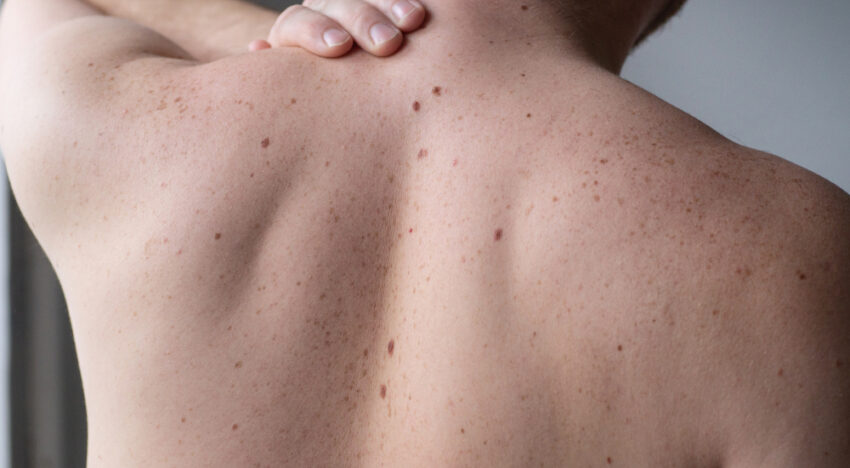
The removal site itself looks like a depression, which is gradually covered with a brown crust. The surrounding skin turns pink, gradually returning to its usual state as the wound heals.
In one of our articles, we talked in more detail about how specialists at the Esteva aesthetic medicine clinic perform removal of benign neoplasms. You can also watch our video on this topic.
What to do after mole removal
After removing any skin growth, the doctor will explain in detail the rules for skin care during the rehabilitation period. We have also described all these recommendations in detail below. Follow them if you want to get the most positive result after the procedure.
Care after mole removal
Proper care after mole removal will help the wound heal as quickly as possible and will contribute to the formation of even, smooth skin at the site of removal.
Recommendations of cosmetologists and dermatologists after removing skin growths:
- Avoid getting an infection in the wound, as this can worsen the healing process. This means that you should not touch the wound with your hands. You should also regularly treat the removal site with a medication that your dermatologist will recommend (for example, Baneocin or Betadine).
- Never remove the crusts that form after removing a mole or other neoplasm. Such crusts should form and peel off naturally to reduce the likelihood of scar formation.
- Do not allow a large amount of moisture to get on the wound. To do this, for a certain period of time, refuse to visit baths, saunas, take long hot baths and showers. Also, do not cover the wound with a plaster and do not treat it with any creams or ointments.
- It is important to especially carefully protect the treated area from sunlight. This will prevent unwanted skin pigmentation after it heals.
- Location should not be treated with aggressive cosmetics (such as acids) or come into contact with makeup. Try to avoid such care products for the period of complete skin recovery after the procedure.
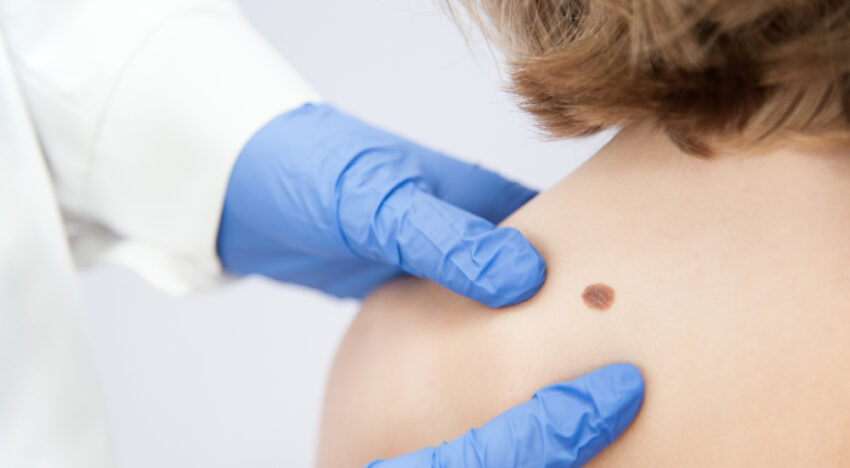
Especially careful attention should be paid to all these rules if the mole removal was carried out on the face. This is due to the fact that it is in this area that the skin is most susceptible to ultraviolet radiation, various environmental factors and is often treated with cosmetics. The nice thing about removing moles on the face is that such lesions heal faster due to increased blood circulation in the facial area.
Recovery after mole removal
The process of skin recovery after mole removal is individual and depends on factors such as the size of the lesion, the depth of its penetration into the skin, and its location. In the first few days after the procedure, a crust forms at the site of removal. It protects the wound from infections and lasts for about 1–2 weeks, after which it gradually disappears.
At this stage, the skin looks tender and sensitive, sometimes redness or slight swelling may persist. In the following weeks, active formation of scar tissue begins, which gradually thickens and changes its appearance. The full maturation of the scar usually takes from 2 to 3 months, but in some cases this process can last up to six months.
It is worth remembering that full recovery is a gradual process that requires patience and proper care.
To be sure that the skin is healing properly, take the time to have a follow-up examination with a dermatologist after removal. An experienced doctor will be able to assess the condition of the skin and will respond promptly if healing is not going well.
Consultation with a dermato-oncologist
Before removing any formation on the skin, the doctor must accurately determine its type. First, you will be asked about the formation: when it appeared, whether it has changed in size, color or shape, whether there have been any accidental injuries. Then, dermatoscopy is performed – an examination of the formation under magnification using a dermatoscope.
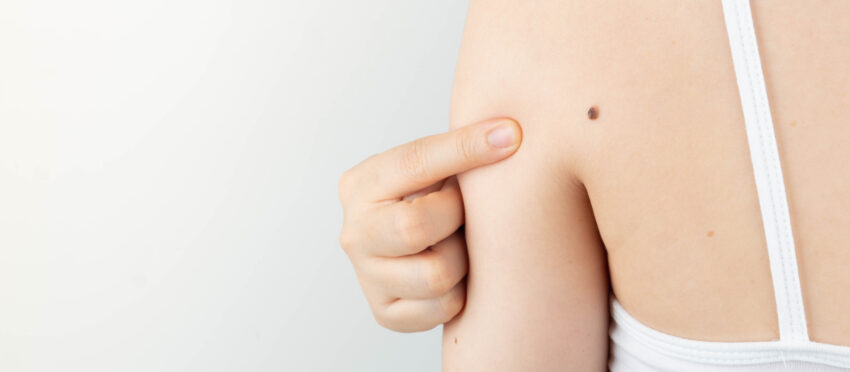
If it is a mole, it must be sent for analysis after removal to confirm that it is benign. If during dermatoscopy the doctor sees signs of malignancy, you will be referred to a dermato-oncologist. In such cases, the mole is removed surgically. During the operation, not only the mole itself is removed, but also a small area of skin around it for accurate examination. The skin is cut with a margin of a few millimeters, and a suture is applied to the surgical site. After healing, a thin scar remains.
Surgical removal is also suitable for flat moles that do not protrude above the surface of the skin. In such cases, the laser or radio wave method is not used, as they are more suitable for volumetric formations.
The surgical intervention method is chosen depending on the size of the mole. This can be a classic elliptical excision or punch removal. For the punch method, a special round scalpel is used, which allows you to remove the mole along with a small column of skin underneath it. This method requires a minimum of stitches.
Usually, surgical removal of moles is performed in one day. The procedure does not require general anesthesia, and after the operation you can quickly return to your usual life.
Potential complications of mole removal
In the field of aesthetic dermatology, two methods are usually used to remove benign moles: radio wave or laser removal. When it comes to malignant neoplasms, dermato-oncologists use the surgical method. Complications after mole removal are very rare, but even in such situations you need to be prepared and react to them correctly.
Consequences of laser and radio wave mole removal
Both methods of mole removal leave behind barely noticeable scars, and the healing process is the same. The choice of removal method depends on the doctor’s decision, who takes into account the location and appearance of the neoplasm.and individual characteristics of the patient.
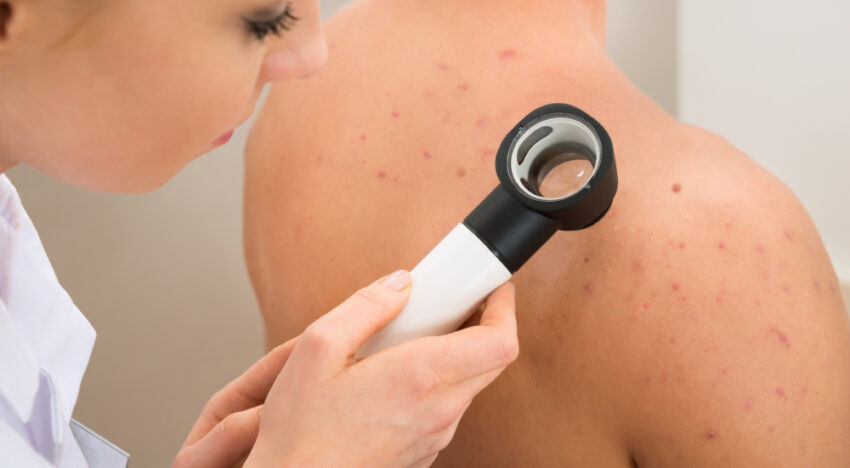
The size of the scar that may remain after the procedure depends on factors such as the size of the mole, its location and the characteristics of the patient’s skin. If the scar is noticeable and causes discomfort, it can be made almost invisible using laser resurfacing. However, such a procedure is possible only after the scar tissue has fully formed, which usually takes several months. After that, you can discuss further actions with your doctor to improve the appearance of the scar. Until this period is over, the doctor, if necessary, may recommend home care products or procedures that will contribute to the correct formation of the scar or prepare it for further correction.
In some cases, pigmentation may appear on the scar over time. This phenomenon is called an “inverted nevus” – a dark spot at the site of the removed mole. It occurs because the pigment cells are located deep in the skin, and it is sometimes impossible to completely remove them. Such pigmentation does not indicate an error during the procedure or that the mole will return to its original form. As a rule, an inverted nevus remains flat and does not rise above the skin level. If the removal was performed correctly, this condition is easily corrected using additional methods.
Consequences of surgical removal of moles
After surgery, as well as after removal with a laser or radio waves, redness will be observed on the skin, a wound with a crust will form. The consequences of surgical removal of moles are also the formation of a scar or pigmentation.
Therefore, it is important to take special care of the area where the procedure was performed, and in case of undesirable consequences, consult a cosmetologist. An experienced doctor will help adjust the further plan of action to reduce or completely remove unevenness in the relief or skin tone.
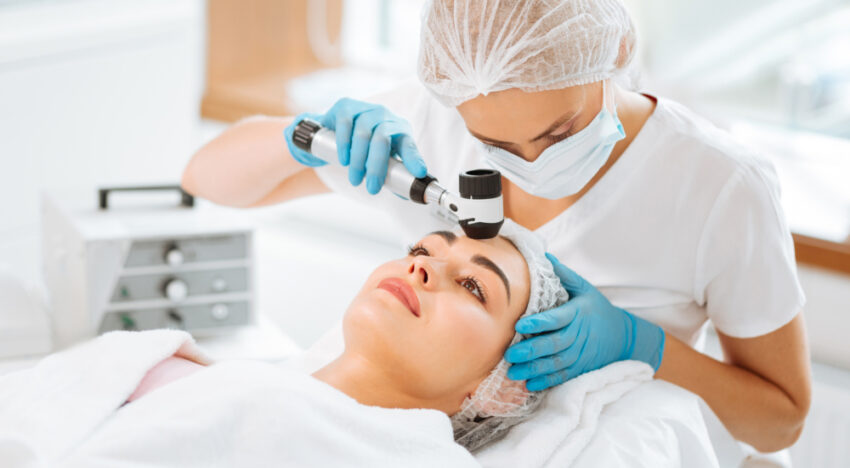
In order to minimize the risk of potential complications and eliminate possible negative consequences, it is important to choose only a proven medical institution. At Esteva Clinic, we adhere to all modern treatment approaches, and our doctors are experienced, high-level specialists.
Cost of removing benign skin neoplasms
Below are the prices for a consultation with a dermatologist at our clinic in Kyiv. During a personal meeting, the doctor will determine the nature of your neoplasms and offer possible options for their removal.
Видалення родимок та невусів
| Назва процедури | Ціна, грн |
|---|---|
| Консультація дерматолога обов’язкова | 790 |
| Контроль після видалення з 30 по 45 день | Безкоштовно |
| Родимки, травмовані новоутворення, невус, поліпи - видалення з гістологією новоутворення до 1 см | 2300 |
| Родимки, травмовані новоутворення, невус, поліпи - видалення з гістологією новоутворення до 2 см або на повіці | 3300 |
| Родимки, травмовані новоутворення, невус, поліпи - видалення з гістологією новоутворень до 1 см до 3 шт | 5900 |







